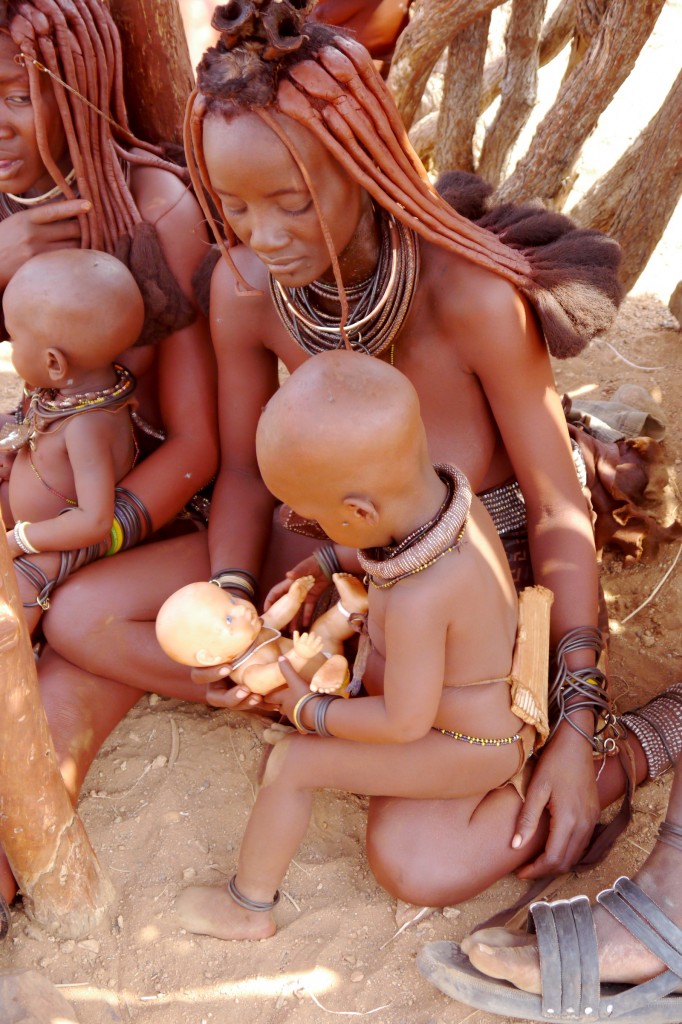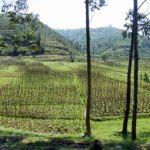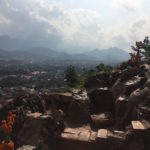Tradition vs. Modernity in the Himba Village


Opuwo and its surroundings remained impressed in my mind for weeks after I traveled there. Never in my life, had I visited a destination that seemed so foreign and removed–both culturally and geographically–from my reality in the West. I remember thinking that the town seemed to teeter precariously on the edge of the earth, as though any slight change would make it drop off the face of the planet altogether. Even the city’s name Opuwo translates to “the end,” as though it marks the last inhabited corner on Earth.
The one-street town of Opuwo is the administrative and political capital of the Kunene region and the heart of the Himba homeland. What it lacks in historical and architectural beauty, it more than makes up for with its colorful, intriguing and eclectic mix of ethnic groups.
Tradition vs. Modernity in the Himba Village.
I was so enthralled by the cultural milieu that I promised myself I would return in order understand it more fully. Thus, after my second term of teaching came to a close, I packed my bags and ventured back into Namibia’s wild northwestern frontier. On the first day of holiday, we spent a few of the evening hours walking around town and observing the constant activity around us, before going to bed early in order to wake up for a day trip to Epupa Falls at the break of dawn.
The last time I visited Epupa Falls, I sat on the back of a bakki with seven of my friends, as the truck zoomed down the road, kicking up a cloud of dust behind us. It was an exhilarating and exhausting ride that only took a few hours due to our breakneck speed.
The second time around, I sat in a small 2WD vehicle, holding my breath as we navigated the ridges and dips in the road and swerved around the sharp stones that seemed to have a knack for popping up in front of our tires. The road to Epupa is bumpy, potholed and unpaved. It took us nearly five hours to reach our destination. Due to the length of our journey as well as our desire to make it back to Opuwo before dark, we had very little time to enjoy the waterfall.
Initially, I must admit I was a bit skeptical about visiting a Himba village.
I spent a few minutes looking out over the Angolan mountains and the rivers of water that had diminished to mere trickles due to the severe drought and again was mesmerized by the beautiful natural display around me. After what seemed like seconds, we were reminded that it was getting late, so we turned back toward the car and headed down the road for a guided tour of a traditional Himba village.
Initially, I must admit I was a bit skeptical about visiting a Himba village. I felt as though I would be an intruder and was wary as my position as a curious westerner. The Himba are often romanticized and regarded as a culture that is untouched by modernity. Their lifestyle has seemingly changed very little since recorded history and they still cling to many of their customs from the precolonial era. Himba are famous for applying a coat of red ochre to their bodies and hair. Women adorn themselves with cow skins and leave their breasts exposed, while men traditionally wear animal hides around their waists and spend their days herding cattle.
I like to think of myself as culturally aware, but I still fell into the trap of idealizing the Himba for their apparent disregard for the conveniences of modern life.
The village we visited lay off the main tourist trail and it was evident that this group of Himbas was not merely adhering to the traditional way of life in order to appeal to tourists. Unlike the Himbas I saw in Swakopmund and Windhoek, they were not posing for money. They were merely going about their daily business and welcomed us into their homes in exchange for a gift.
I like to think of myself as culturally aware, but I still fell into the trap of idealizing the Himba for their apparent disregard for the conveniences of modern life. I pictured the Himba living in a time vacuum–in their own distant reality that modernity failed to reach.
Yet, looking closely reveals a people that are very much a part of the modern world. A visit to the Himba homeland provided us with a powerful illustration of a culture that is struggling to hold onto its roots as the pull of modernity threatens to rip it apart. In Opuwo, groups of Himba girls sat on the street corners, SMSing their friends. Along the road to the waterfall, young boys herding their goats and cattle donned T-shirts and baseball caps. When we visited the village, most members of the community asked to see pictures of themselves and enjoyed flipping through the photo albums on our iPad. We met Himbas who walked around the streets of Opuwo and spoke to us of their choice to abandon the lifestyle of their forefathers.
Tradition vs. Modernity in the Himba Village.
Perhaps the moment that struck me most was when I watched a little child play with her Caucasian, plastic baby doll. In a community where everything–from homes to clothing to food– is made from animal hides and the rich red earth, a plastic doll seemed as out of place as a fish on dry land. The little girl carried the doll, pretended to feed it and stared into its blue eyes, as the small plastic eyes stared back at her ochre-clad body. How the baby-doll made its way to a tiny Himba village in one of Africa’s most remote and isolated corners remains a mystery to me.
However, what it did make me realize was that the cultures we often glorify as having the power to resist modernity are, conversely, quite affected by the modern way of life. The push and pull of modernity and tradition seems to have found a precarious balance in Kunene, but I couldn’t help but fear that this proud and beautiful culture would slowly succumb to the ways of the West and that its ancient traditions would begin to be forgotten.
While I have little doubt that increased education, development and a higher standard of living are things that countries around the continent–indeed the world–should strive for, I cringe at the implications that this will likely have. For, as much as I would love for cultures such as the Himba to remain intact and for their customs to live on generation to generation, I recognize that it is an increasingly difficult feat in today’s world–that these positive forces are simultaneously what make it difficult for groups of people to sustain their cultural heritage and ways of life. I think this is one of modernity’s greatest tragedies.









